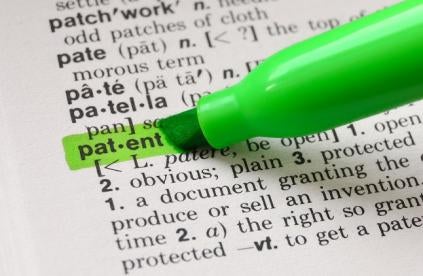This article is first in a series focusing on various issues related to Patent Term Adjustment. Part 1 is a general overview of how to calculate patent term adjustment, without addressing the numerous factors that can affect patent term adjustment that will be examined in future articles.
Why PTA Exists
Under the pre-GATT regime, Patent Term Adjustment (“PTA”) did not exist in the U.S. because patent term was 17 years from issuance. Consequently, any delay during examination, on the part of the United States Patent and Trademark Office (“USPTO”) or Applicants, was not a concern. In fact, during this time, Applicants were in a way incentivized to, and sometimes would, delay examination to prolong their effective patent term, particularly since at the time publication of applications did not occur until issuance of the patent. However, in 1995 GATT was adopted in an effort to harmonize U.S. patent term with the rest of the world, with patent term in the U.S. now being limited to 20 years from the earliest effective filing date. As a result, any delays during examination would now erode a patent’s period of enforceability, which could cost Applicants millions of dollars or more. Unfortunately, the onus was only on Applicants to avoid delays during examination, resulting in USPTO delays costing Applicants days or years of patent term without any recourse. In an effort remedy this, Congress created PTA.
PTA was established by the American Inventors Protection Act of 1999 and codified at 35 U.S.C. § 154(b) as a way to balance unreasonable delays caused by the USPTO and Applicants during examination of a non-provisional patent application such that, if warranted, an Applicant could gain additional patent term (i.e., effective patent term could be extended past 20 years from an application’s earliest effective filing date.) Thus, there are two basic parts of a PTA calculation, in which PTA can never be negative:
[USPTO DELAY] – [APPLICANT DELAY] = PTA
USPTO Delays
35 U.S.C. § 154(b) defines 3 kinds of examination delays: “A” delay, “B” delay, and “C” delay, which are addressed separately below. That is, USPTO delay is calculated as:
“A” Delay + “B” Delay + “C” Delay = USPTO Delay
“A” Delay
35 U.S.C. § 154(b)(1)(A) provides adjustment of patent term for USPTO delays, which is coined “the 14-4 Rule.” That is, to avoid “A” delays, the USPTO must provide notice, i.e., mail a restriction requirement, non-final office action, or notice of allowance, regarding a newly-filed application within 14 months of its filing date for standard U.S.-origin applications, and thereafter, the USPTO should respond to a reply or an appeal within 4 months and issue the patent within 4 months of issue payment.
Example: A delay = 50 days

“B” Delay
35 U.S.C. § 154(b)(1)(B) provides a guarantee of no more than a 3-year application pendency (“the 3 Year Rule”). That is, “B” delay accrues when the USPTO fails to issue a patent within 3 years from the filing date or from entry date into the U.S. national stage. However, “B” delay excludes time consumed by (1) Requests for Continued Examination (RCE), and (2) appeals or interferences.
Example: B delay = 15 days

“C” Delay
35 U.S.C. § 154(b)(1)(C) provides adjustment of patent term for interferences, secrecy orders, and appeals. Although an appeal terminates the “B” delay clock, part of an appeal may be counted as “C” delay if the appeal is successful.
Overlapping Days
35 U.S.C. § 154(b)(2)(A) states that to the extent periods of “A,” “B,” and/or “C” delay overlap, the period of any adjustment granted shall not exceed the actual number of days the issuance of the patent was delayed. In calculating USPTO delays, double-counting is prohibited, and thus, overlapping delays must be subtracted from the sum of the “A”, “B”, and “C” Delays.
Example: Total USPTO Delay = 75 Days

Applicant Delays
Applicant Delay is, per 35 C.F.R. 1.704, the number of days an applicant “failed to engage in reasonable efforts to conclude prosecution … of an application.” Common examples of when Applicant Delay can accrue include (1) filing a response to an action or request from the USPTO more than 3 months after the mailing date (even if the period for responding without fees is shorter, e.g., Notices to File Missing Parts and Restriction Requirements, and independent of whether the action from the USPTO is defective), (2) filing Supplemental replies (including, in some instances, an Information Disclosure Statement); and (3) filing of an amendment after Notice of Allowance. Further discussion of PTA and defective actions issued by the USPTO can be found at Global IP Matters here.

Conclusion
Even though the USPTO provides a PTA calculation with the Issue Notification and on the face of an issued patent, it is generally a good idea to confirm the USPTO’s PTA calculation, and if there is an error, to file a petition with the USPTO to challenge the PTA calculation. While the above discussion provides a general overview of PTA and how it is calculated, patentees are encouraged to verify PTA calculations according to the current rules and regulations of the USPTO.





 i
i

